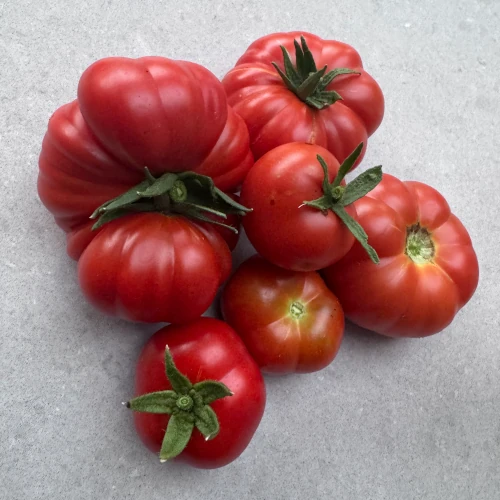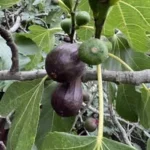Eating with the seasons isn’t just a foodie trend—it’s a way to enjoy vegetables at their peak flavour, support local growers, and reduce the environmental footprint of your diet. When you buy seasonal vegetables, you’re getting produce harvested close to home, often fresher, tastier, and more nutrient-rich than imports that travel thousands of miles.
Here’s your guide to the best vegetables each season, plus tips on where to find the freshest picks.
Spring Vegetables: Freshness and Renewal
Spring brings a burst of colour and tender flavours after the long winter months. The ground begins to warm, and shoots push through, offering the first taste of new life.
What’s in season (March – May):
- Asparagus – short season, vibrant and tender.
- Spring greens & spinach – perfect for quick sautés or salads.
- Radishes – crisp, peppery, and refreshing.
- New potatoes – sweet and waxy.
- Peas & broad beans – ideal for risottos or purees.
- Carrots – sweeter after winter storage.
Where to buy the best: Farmers’ markets are the ultimate destination for spring seasonal vegetables. Look for asparagus grown locally—it tastes far better than imported spears. Community-supported agriculture (CSA) boxes also start to fill up with leafy greens and early crops.
Summer Vegetables: Colour and Abundance
Summer is peak season for variety. From juicy tomatoes to crisp cucumbers, this is when gardens, allotments, and fields deliver in abundance.
What’s in season (June – August):
- Tomatoes – bursting with sweetness, perfect raw or roasted.
- Courgettes & summer squash – versatile and tender.
- Cucumbers – refreshing in salads or pickled.
- Sweetcorn – best eaten soon after harvest when sugars are high.
- Green beans – quick to cook, great with garlic and lemon.
- Beetroot – earthy, colourful, and surprisingly sweet.
- Salad leaves – fresh and plentiful.
Where to buy the best: Farm shops and pick-your-own farms shine in summer. There’s nothing like sweetcorn straight from the stalk or tomatoes from a local greenhouse. If you’re in the city, food cooperatives and organic veg box schemes deliver seasonal vegetables to your door.
Autumn Vegetables: Hearty and Comforting
Autumn is the season of earthy roots and vibrant squashes, perfect for warming stews, soups, and roasts.
What’s in season (September – November):
- Pumpkins & squashes – sweet and nutty, perfect for soups and bakes.
- Kale & cavolo nero – dark, earthy greens full of nutrients.
- Turnips & swedes – peppery, hearty, and great in mash.
- Cabbages – versatile for slaws, stir-fries, or braises.
- Mushrooms – wild varieties like chanterelles and porcini appear.
- Leeks – sweet and mild, ideal in pies and soups.
- Parsnips – nutty and sweet, especially after frost.
Where to buy the best: Autumn markets brim with root seasonal vegetables and squashes. Many local growers hold harvest festivals where you can pick up unusual heirloom varieties. Foraged mushrooms, if you’re adventurous, can be a treat—but buy from trusted sellers unless you’re experienced in identifying them.
Winter Vegetables: Resilient and Nourishing
Winter may seem sparse, but hardy vegetables thrive in the cold. These are the crops that have sustained communities for centuries—nourishing, filling, and surprisingly full of flavour.
What’s in season (December – February):
- Brussels sprouts – sweetest after frost, classic roasted.
- Celeriac – earthy and creamy, great in mash or soup.
- Turnips – peppery roots that sweeten in the cold.
- Carrots & parsnips – long-lasting and versatile.
- Savoy cabbage – crinkly leaves with a robust bite.
- Winter squash – dense, sweet, and perfect for roasting.
- Beetroot – stores well, adds colour in the darker months.
Where to buy the best: Winter is when veg box deliveries shine. They make the most of storage crops like potatoes, carrots, and cabbages while offering hardy greens grown under cover. Farmers’ markets may be smaller but still deliver the freshest seasonal vegetables, often harvested just hours before sale.
Final Thoughts: Why Seasonal Eating Matters
By eating seasonal vegetables, you’ll:
- Enjoy produce at its natural peak of flavour.
- Support local farmers and communities.
- Reduce reliance on imports and lower food miles.
- Embrace variety in your cooking year-round.
If you’re unsure what’s in season, check your local farmers’ market—what’s piled high on the stalls is what nature intended you to eat right now. And if convenience is key, sign up for a local organic veg box scheme.
For more detail on UK produce timings, check the BBC Good Food Seasonal Calendar, which lists what’s fresh each month.
Eating seasonally isn’t just good for your health—it’s a way of reconnecting with nature’s rhythms and making every meal taste better.




[…] One of the biggest strengths of turnip schnitzel is sustainability. Turnips are low-impact crops compared to many animal proteins. They thrive in cooler climates, support soil health in crop rotation, and require fewer inputs than many modern staples. Choosing local, seasonal turnips reduces food miles and carbon footprint. For eco-friendly cooking tips, see my guide on seasonal vegetables. […]